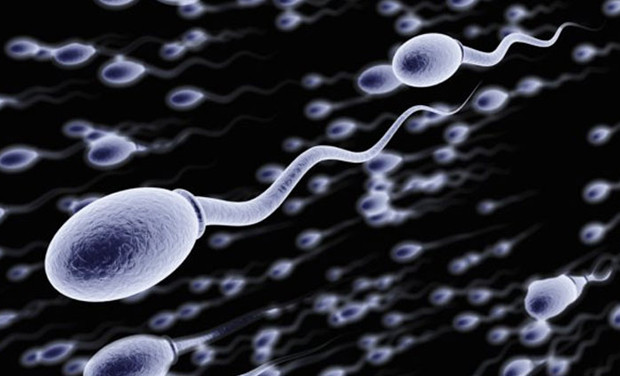Sperm are produced like?
Sperm is the reproductive cell in men. Sperm is produced from the sperm cells in the sperm tubes, then they move into the epididymis to undergo the final stage of maturation before ejaculation. If not ejaculated, sperm will die and be absorbed by the epithelium of the epididymis. The process of spermatogenesis is a complex process, influenced by many factors.
Where are sperm produced from?
Sperm is produced in the testes, in small tubes and tightly wrapped called sperm tubes. These tubes have a total length of about 150m. Lying between the sperm tubes are Leydig cells that function to produce male sex hormones, testosterone.
How does spermatogenesis take place?
The process of sperm production is a long and continuous process. In testicles, sperm undergo different stages of development. In the testes, some sperm are at an early stage of development and others are at later stages.

Sperm production begins with stem cells, called protozoa.
In the testes, epithelial cells are contiguous along the continuous division of the birth canal to produce sperm. Sperm production begins with stem cells, called protozoa.
These cells divide and undergo many stages of development, including large changes in shape, from circular cells to 'like tadpole' shapes as adults. At this time, sperm will be released from epithelial cells around the spermatogen and away from the testicles to the epididymis.
Little known facts about sperm
Sperm requires 10-12 weeks to mature
The total time for sperm to form from protozoan (stored in the spermatogenesis) to the stage of complete maturation and preparation for ejaculation is about 10-12 weeks.
First, sperm is produced at the spermatogenesis in the testicle. Then the sperm enters the epididymis. Here sperm undergoes a final stage of maturation before ejaculation. This process from the protozoan to the sperm needs about 70 days. Finally, sperm must undergo a final period of about 12-21 days in the epididymis to mature completely functionally.
A testicle produces 50 - 150 million sperms per day

Fever over 38.5 degrees C can inhibit spermatogenesis in 6 months.
Every day a testicle can produce up to several hundred million sperms. This process is continuous throughout the life of men, starting from the time of puberty and usually beginning to decline around 40-45 years.
Although spermatogenesis is very effective and highly efficient, fertilization is not effective. In hundreds of millions of sperm enters the female genital tract, only one sperm actually fertilizes the ovary.
Fever over 38.5 degrees C can inhibit spermatogenesis in 6 months
Fever over 38.5 degrees C can inhibit spermatogenesis in 6 months. The process of spermatogenesis still takes place but has a small quantity and low quality. In addition, high temperatures can damage sperm sperm, causing a high rate of malformed sperm.
According to one study, people who work in long-distance chauffeur jobs may suffer from prolonged sitting and working conditions, leading to an increase in scrotal temperature leading to decreased spermatogenesis and sterility. People who work in hot environments of other professions such as cooks, welders, metallurgists, watchmakers . have reduced sperm quality.
Diet affects the number of spermatozoa
Lack of diet like vitamin E, vitamin A, some fatty acids, amino acids and zinc can directly affect the testes and reduce spermatogenesis. Lack of vitamin B directly affects the pituitary and indirectly on the testicle, which affects spermatogenesis.
- Successful production of sperm from human skin
- Successfully produced artificial sperm in the laboratory
- Interesting surprises you never knew about sperm
- The louder the voice, the less sperm
- New discoveries about the
- It turns out that it is the egg that determines which sperm to choose to conceive
- 6 weird and interesting facts about 'sperm'
- Complete decoding the human sperm genome
- Out of the 'quarter switch', now we have the 'sperm switch' with on-off mode
- Not the fastest sperm will win
- The main culprit causes sperm deformities
- 10 things you don't know about sperm
 Green tea cleans teeth better than mouthwash?
Green tea cleans teeth better than mouthwash? Death kiss: This is why you should not let anyone kiss your baby's lips
Death kiss: This is why you should not let anyone kiss your baby's lips What is salmonellosis?
What is salmonellosis? Caution should be exercised when using aloe vera through eating and drinking
Caution should be exercised when using aloe vera through eating and drinking